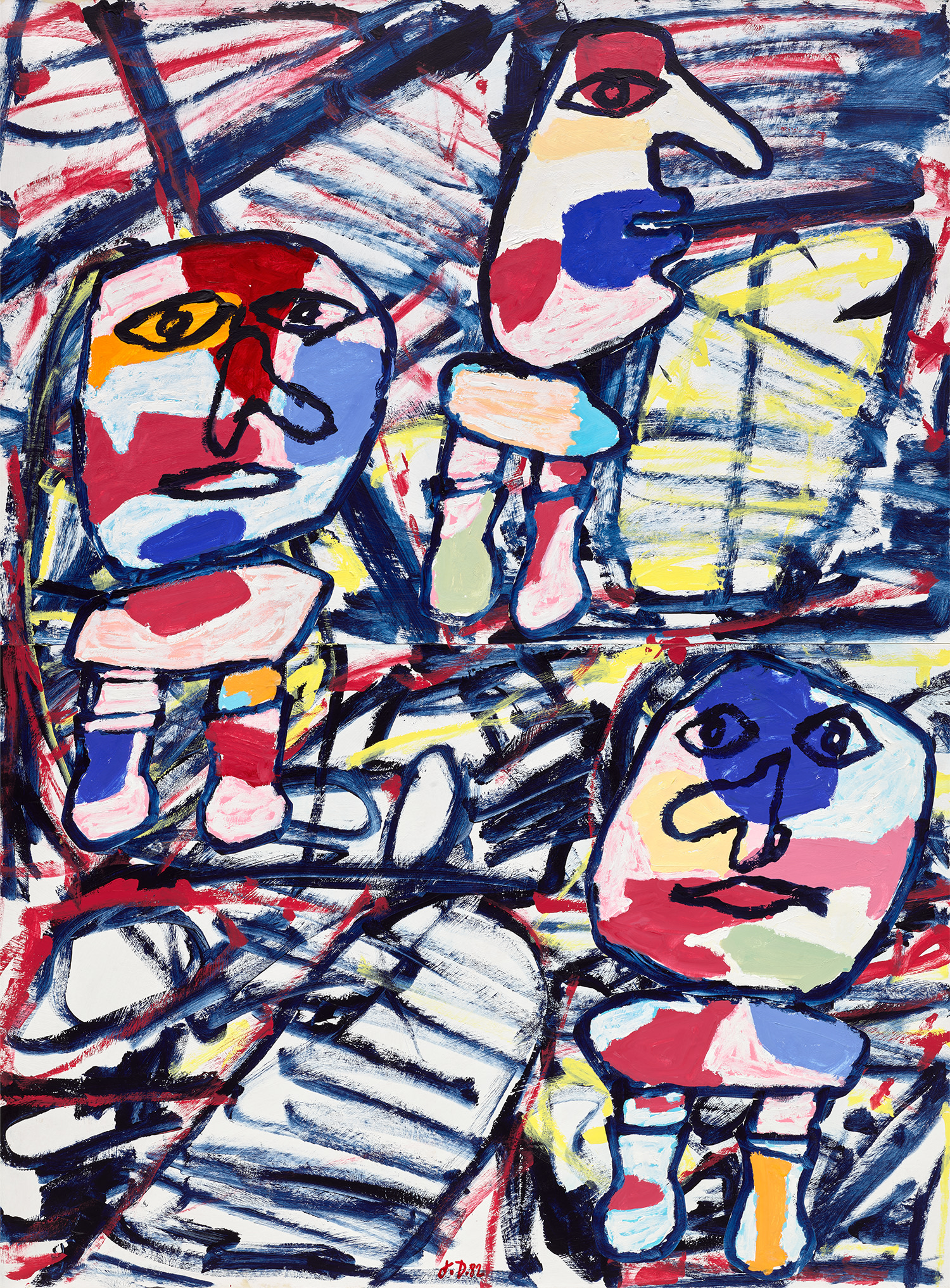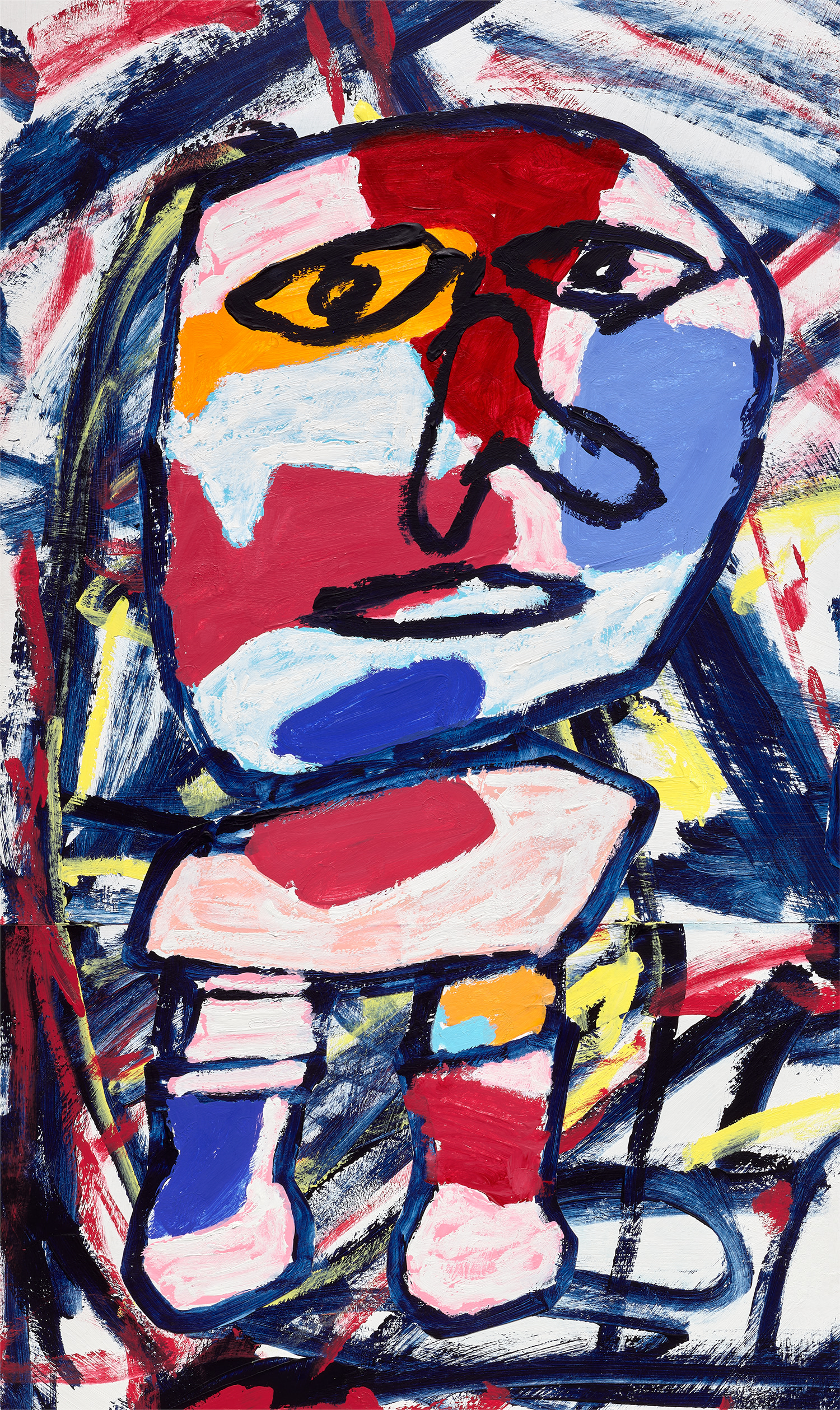





Property from an Important American Collection
20
Jean Dubuffet
Site aléatoire avec 3 personnages
signed with the artist's initials and dated ‘J.D. '82’ lower centre
acrylic and paper collage on paper laid on canvas
134 x 100 cm (52 3/4 x 39 3/8 in.)
Executed on 3 July 1982.